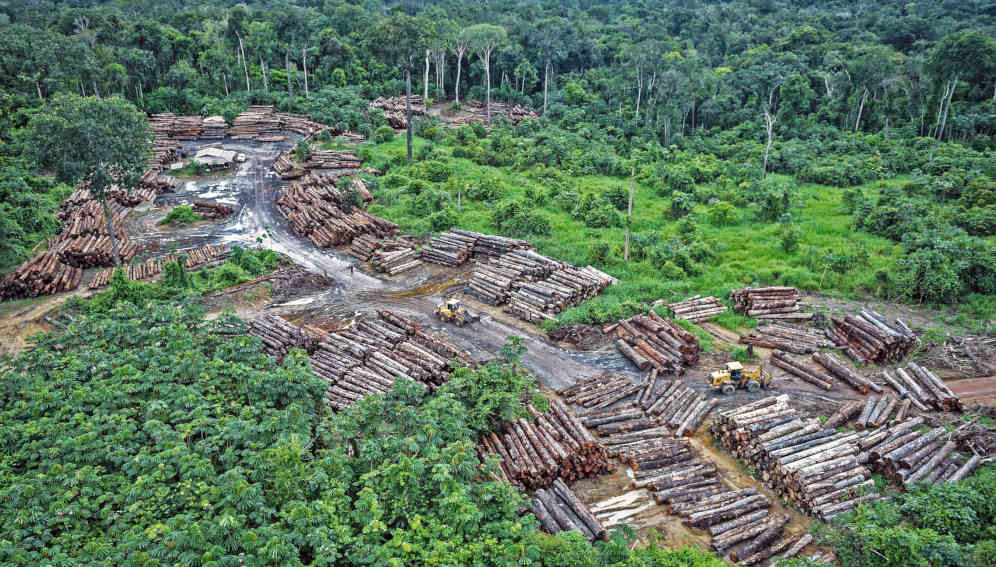On the first of December, the Focali-SIANI Dialogue Forum in collaboration with partners from science, civil society and Sida are organising a global online exchange on a Human Rights-based approach (HRBA) for biodiversity and livelihoods and how HRBA can be translated into policy and practice. Such an approach is recognised as a vital contribution given scientific evidence of biodiversity loss as well as the human rights violations that have been documented in nature conservation, especially in the Global South. The event aims to increase attention to the meaning and effects of using HRBA for people and nature and to bridge the gap between knowledge communities and policy-and practice actors with a focus on human rights and biodiversity protection.
This autumn, two international high-level meetings relevant to climate and biodiversity policy were held, namely Conference of the Parties to the Convention of Biological Diversity – COP15 (the first session) and the Conference of the Parties to the United Nations Framework Convention on Climate Change – COP26. In the lead up to these Conferences, civil society organisations voiced their demands to make human rights central in responses to the risks of climate change, environmental degradation, and biodiversity loss. But what is a HRBA and how does it link to global efforts to safeguard biodiversity and land-based mitigation efforts? And how are human rights represented in the negotiating text on biodiversity?
This article aims to offer a first look at these questions by introducing the concept of HRBA and indicating its relevance for biodiversity protection. In addition, several examples highlight how human rights were brought up in connection to COP15 and COP26.
Human Rights-Based Approach(es): A general definition
One of the most frequently quoted general definitions of HRBAs was developed by the Office of the United Nations High Commissioner for Human Rights as a:
…a conceptual framework for the process of human development that is normatively based on international human rights standards and operationally directed to promoting and protecting human rights.
While there is no common understanding of how to practice HRBA, the UN identifies six human rights principles that are central to the approach. Of these, principle 4, 5 and 6 have been especially prominent for the operationalisation and implementation of HRBA in different contexts. They are the principles of equality and non-discrimination, participation and inclusion, and accountability and the rule of law.
Furthermore, certain general characteristics distinguish HRBA from other approaches. The most essential of these is the use of the concept of rights and positioning people as rights-holders. This transforms the “beneficiaries” of development initiatives from passive charity recipients to active right-holders. As it only makes sense to talk about rights if there is a corresponding obligation to uphold them, the employment of the right-concept presupposes a relatively well-functioning state. In practice, this often means that donors take on a responsibility to incorporate human rights principles in how they work. They are also likely to focus on enabling the duty-bearer – often the State – to respond to the right-holders’ claims, the empowerment of right-holders to put forth those claims and/or on making sure that right-holders’ core rights, such as the right to health, are fulfilled.
In sum, whereas the general definition and guiding principles of HRBA are relatively straightforward and it is possible to identify certain characteristics that distinguish HRBA from other development approaches, there is no general agreement on its practice.
HRBA in Responding to Biodiversity Loss: How is it relevant?
Evidence suggests that there is a risk for trade-offs and negative impacts on human rights with current measures to safeguard biodiversity – especially the rights of Indigenous Peoples, Afro-descendants, local communities, peasants and rural women and youth (henceforth IPLC). The Special Rapporteur on Human Rights and the Environment highlights in a recently published policy brief how the implementation of protected areas and the exclusion of IPLC from access to land and resources also known as fortress conservation, has led to numerous human rights violations, such as the right to life, food and water. It has also been linked to gender-based violence. In addition, a report by the Rights and Resources Initiative estimates that a total of 136 million people are thought to have been displaced following the creation of protected areas.
Exclusionary conservation measures have, apart from being linked to human rights violations, been shown to hold limited gains for nature. The Special Rapporteur on Human Rights argues that they, at best
“attain their conservation goals, but do so while inflicting unacceptable human rights violations” and, at worst, result in “the abuse and marginalisation of the rightful guardians of vast, interconnected ecosystems while facilitating environmental degradation and biodiversity loss”.
For instance, a report by the Rainforest Foundation on the situation in the Congo Basin traces serious human rights abuses, gender-based violence, arbitrary detention, and cruel punishment, to the anti-pouching measures carried out by eco-guards. In some parts of the world conservation has become increasingly militarised, yet these measures generally fail to meet their objective of preventing poaching. Instead, they serve to further alienate local populations, whose involvement, according to the report, is key for successfully safeguarding the unique biodiversity, in, for instance, the Congo Basin.
What is the suggested solution to the double failure of protecting threatened ecosystems and endangered wildlife and ensuring that the human rights of IPLCs are respected?
Positive biodiversity outcomes have been correlated with community-based management or co-management arrangements that recognise IPLCs as right-holders and affirm their cultures and livelihoods. The Special Rapporteur highlights this mutually dependent relationship between nature and the rights of IPLCs. He provides recommendations for safeguarding biodiversity rooted in human rights-principles that recognises IPLCs as right-holders and that acknowledges IPLCs’ traditional knowledge and their role as custodians of biodiversity.
